After the hot autumn of 2020 and the now almost seemingly eternal graphics card thirst, we have in the meantime also learned many new terms and various hardships. If you’re not into SM games, i.e. scalpers & mining, it’s really hard to realize your dream of a new, super-fast pixel slingshot in a reasonable frame at the moment. And then came the GeForce RTX 3080 Ti along with LHR. I don’t want to and can’t make any predictions how effective the new move will be at least against the casual miners in the future, but it’s exactly this new gaming product from Jensen’s GeForce kitchen, that I have for you in the test today.
Without spoiling it in advance, because you are still supposed to read it, the tests were really worth it this time as well. Whether it ends up being the Founders Edition for an MSRP of 1199 Euros or a Board Partner card (if something ever shows up on sale as available for order), that’s up to each person to decide for themselves, their preferences, their fashion tastes, and of course, how full their wallet is as well as the state of the market. The retail trade is unfortunately as always in the boat, because supply and demand regulate unfortunately as always the price, to sell less expensive is there also no solution in the sense of the customers, but scarcity arouses now times also desires.
The new GeForce RTX 3080 Ti is said to fall between the GeForce RTX 3080 and the RTX 3090. But whether it will fall exactly in the middle or whether the pendulum will move more in the direction of the smaller or larger card remains to be seen today. After all, NVIDIA wants to bring a gaming graphics card for the highest demands among the people, which didn’t look so mass-compatible with the GeForce RTX 3090 due to price and availability, as well as the immense memory expansion. This RTX 3090 is and will probably remain a lighthouse project. But people are still looking for revenge because of AMD’s Radeon RX 6900XT, which often came quite close to the RTX 3090.
And then we’d be back to the unspeakable Just buy it! of a certain colleague from overseas. It would be nice if you could do it that way (as you like) today. The time has been changed, the market dried out. However, there are no such advance praises here, because the newest offspring from NVIDIA’s glossy catalog must first show what it can really do. The genes already fit, because the heart of the GeForce RTX 3080 Ti is the GA102-225 graphics processor. It is based on Samsung’s 8nm process node developed specifically for NVIDIA and has a total of 28 billion transistors. We already know it from last year.
It measures just under 628 mm², making it the second largest gaming GPU ever produced just below the Turing TU102 GPU. For the GeForce RTX 3080 Ti, NVIDIA has after all enabled 80 SM units on its flagship, resulting in a total of 10240 CUDA cores. In addition to CUDA cores, NVIDIA’s GeForce RTX 3080 Ti is also equipped with next-generation RT (ray tracing) cores, Tensor cores, and the new SM or streaming multiprocessing units. As for memory, the GeForce RTX 3080 Ti is equipped with 12GB of GDDR6X memory that can deliver memory speeds of 19.0Gbps. Together with a 384-bit interface, this will deliver a cumulative bandwidth of 912.4 Gbps.
All GeForce cards have been patched in the meantime, so that all cards in the test field can handle the extended memory area (Resizeable BAR), which simplifies the charts considerably and doesn’t need to be mentioned further in the article.
The GeForce RTX 3080 Ti Founders Edition
Theory, well, you like to take with you, but now it’s straight and no frills to the nitty gritty. The case of the card is a pretty clever mix of light metal, plastic and hardware, which feels great and valuable and also looks good. The design with the 3.8 cm installation depth and the 4 mm backplate makes this card a true dual-slot design with all known advantages and disadvantages. Love it or hate it, it’s not a deterrent in the form of this graphics card, despite the power consumption it has to deal with.
At 1372 grams, the card is by no means a flyweight and 20 grams heavier than the RTX 3080 without Ti, which is probably due to the two added memory modules. The length of 28.5 cm is moderate, and the installation height of 10.5 cm from the upper edge of the PCIe slot with the card installed to the top of the cover is nothing to be afraid of. The funny 12-pin Micro-Fit 3.0 on the top is beveled by 45° and points slightly to the back. Here you can connect the supplied 12-pin adapter to which the two conventional 6+2-pin plugs fit, which we have known for years. You will see the board on the next page and you will understand why it had to be that way. Form follows function, or something. There are also further details about the cooler design.
NVIDIA is once again doing away with USB Type C on the slot panel, probably because the VR hype has cooled down considerably in the meantime. Interestingly, AMD has included this feature with Big-Navi, while they seem to have already finished with it here. The HDMI 2.1 port shouldn’t be missing, nor the three current 1.4 DisplayPorts, of course. The large cooling vents show where the wind is blowing from (or to) and that’s about it for the exterior. It’s nothing completely new.
The data of the Founders Edition can be seen in the current GPU-Z screenshot, the rest I already mentioned above. The 1365 MHz base and the 1665 MHz boost clock are already known as well as the 1188 MHz memory clock and the memory expansion with 12 GB at the 384 bit interface. One is slightly below the other two cards in terms of clock, but that’s not surprising. Cannibalization is not so much in vogue at NVIDIA right now.
In direct comparison to the other new cards, the RTX 3080 Ti is at the top end of the food chain with the 3090, and the performance-related gap between the 1199 euro card and the 1499 euro GeForce RTX 3090 is significantly smaller than the price difference. Again, I have a table for all statisticians among you, before it really gets going from the next page on.
| GeForce RTX 3070 | GeForce RTX 3080 | GeForce RTX 3080 Ti |
GeForce RTX 3090 | |
|---|---|---|---|---|
| GPU | GA104-300 | GA102-200 | GA102-225 |
GA102-300 |
| Process node | Samsung 8 nm | |||
| The Size | 395.2 mm2 | 628.4 mm2 | ||
| Transistors | 17.4 billion | 28 billion | ||
| CUDA Cores | 5888 | 8704 | 10496 | |
| TMUs/ROPs | TBA | 272 / 96 | 320/112 |
TBA |
| Tensor/RT | 184 / 46 | 272 / 68 | 320 / 80 | 328 / 82 |
| Base clock |
1500 MHz | 1440 MHz | 1365 MHz |
1400 MHz |
| Boost clock |
1730 MHz | 1710 MHz | 1665 MHz |
1700 MHz |
| Memory | 8 GDDR6 | 10 GB GDDR6X | 12 GB GDDR6X | 24 GB GDDR6X |
| Interface | 256-bit | 320-bit | 384-bit | 384-bit |
| Throughput | 14 Gbps | 19 Gbps | 19 Gbps |
19.5 Gbps |
| Bandwidth | 448 Gbps | 760 Gbps | 912.4 Gbps |
936 Gbps |
| TGP | 220W | 320W | 350 W |
350W |
| Launch | 15.10.2020 | 17.09.2020 | 02.06.2021 |
24.09.2020 |
Test system and evaluation software
The benchmark system is new and is now not only in the lab, but also again as a double in the editorial office. I’m also going for PCIe 4.0, the right X570 motherboard in the form of an MSI MEG X570 Godlike (gaming benchmarks) and an MSI MEG X570 Ace (measurement lab) respectively, and a select Ryzen 9 5900X in each case, both water-cooled and overclocked to 4.7GHz. In addition, the matching DDR4 3800 RAM (Corsair, G.Skill) and several fast NVMe SSDs. For direct logging during all games and applications, I use NVIDIA’s PCAD, which adds to the convenience immensely.
The measurement of the power consumption and other things takes place here in the special laboratory on a redundant and almost identical test system then double-tracked by means of high-resolution oscillograph technology…
…and the self-created MCU-based measurement setup for motherboards graphics cards (pictures below), where at the end in the air-conditioned room also the thermographic infrared images are created with a high-resolution industrial camera. The audio measurements are done outside in my chamber.
I have also summarized the individual components of the test system in a table:
| Test System and Equipment |
|
|---|---|
| Hardware: |
AMD Ryzen 9 5900X @4.7 GHz MSI MEG X570 Godlike / X570 Ace 2x 16 GB DDR4 3800, CL16 Be Quiet! Dar Power Pro 1200W |
| Cooling: |
Alphacool Ice Block XPX Pro Alphacool Ice Wolf (modified) Alphacool Subzero |
| Case: |
Raijintek Paean |
| Monitor: | BenQ PD3220U |
| Power Consumption: |
Oscilloscope-based system: Non-contact direct current measurement on PCIe slot (riser card) Non-contact direct current measurement at the external PCIe power supply Direct voltage measurement at the respective connectors and at the power supply unit 2x Rohde & Schwarz HMO 3054, 500 MHz multichannel oscilloscope with memory function 4x Rohde & Schwarz HZO50, current clamp adapter (1 mA to 30 A, 100 KHz, DC) 4x Rohde & Schwarz HZ355, probe (10:1, 500 MHz) 1x Rohde & Schwarz HMC 8012, HiRes digital multimeter with memory function MCU-based shunt measuring (own build, Powenetics software) NVIDIA PCAT and FrameView |
| Thermal Imager: |
1x Optris PI640 + 2x Xi400 Thermal Imagers Pix Connect Software Type K Class 1 thermal sensors (up to 4 channels) |
| Acoustics: |
NTI Audio M2211 (with calibration file) Steinberg UR12 (with phantom power for the microphones) Creative X7, Smaart v.7 Own anechoic chamber, 3.5 x 1.8 x 2.2 m (LxTxH) Axial measurements, perpendicular to the centre of the sound source(s), measuring distance 50 cm Noise emission in dBA (slow) as RTA measurement Frequency spectrum as graphic |
| OS: | Windows 10 Pro (all updates, current certified or press drivers) |
- 1 - Introduction, Unboxing and Test System
- 2 - Teardown, PCB Analysis and Cooling System
- 3 - Performance: WQHD and Full-HD plus DXR
- 4 - Performance: Ultra-HD with and without DLSS / DXR
- 5 - FPS, Percentiles, Frame Time & Variances
- 6 - Frame Times vs. Power Draw
- 7 - Power Consumption: GPU and CPU in all Games
- 8 - Power Consumption: Effiziency in Detail
- 9 - Power Consumption: Overview, Summary and measured Details
- 10 - Standards (PCI SIG), Transients and PSU Recommendation
- 11 - Temperatures, Boost Clock Rate and Thermal Imaging
- 12 - Fan Speed, Noise and Audio-Sample
- 13 - Summary and Conclusion














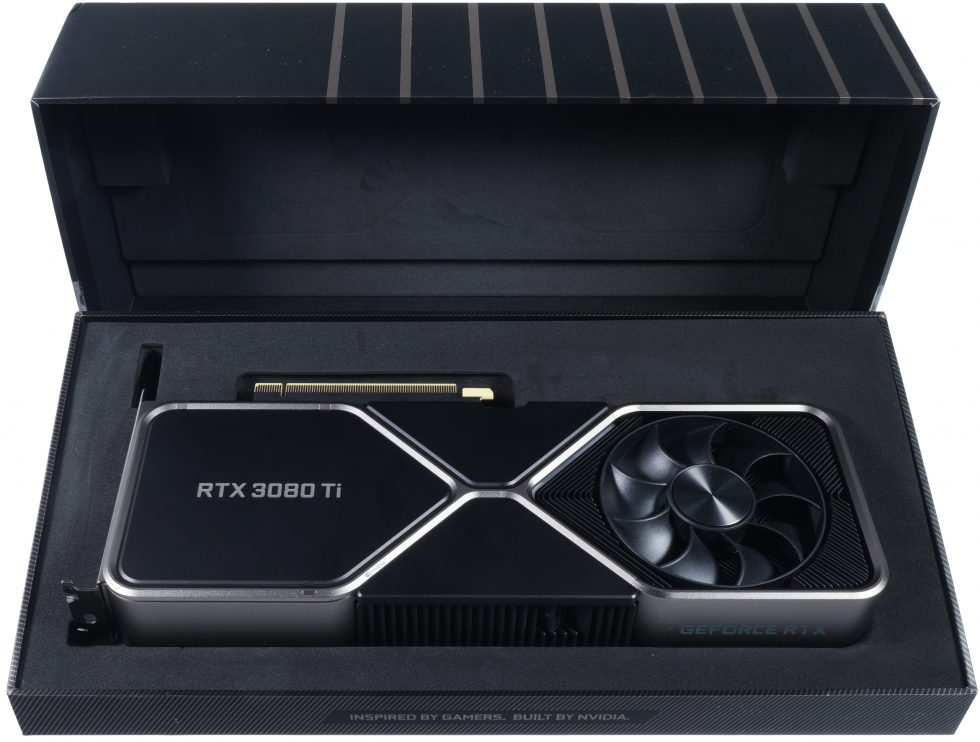
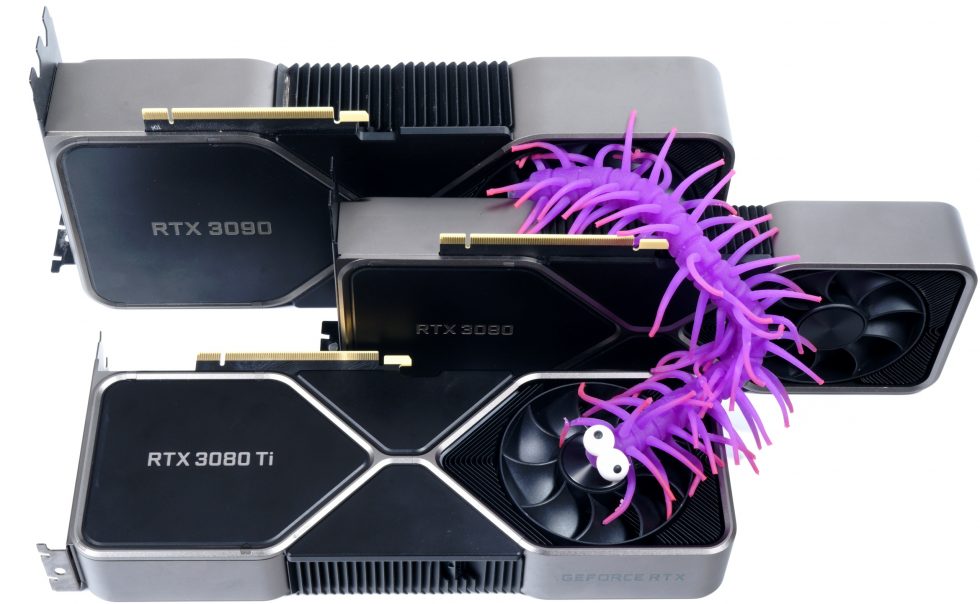
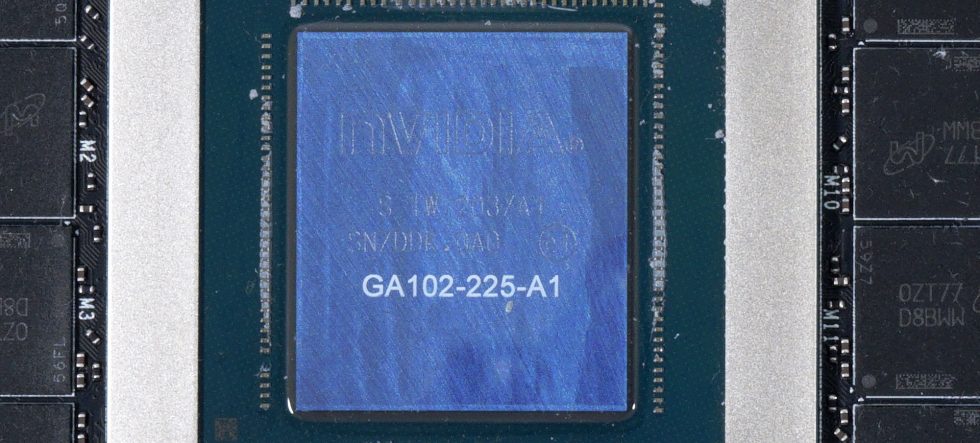
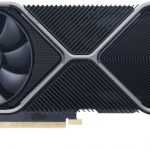
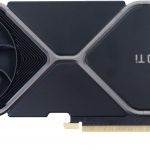
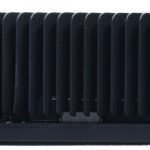
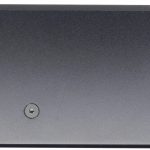
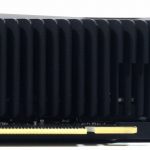
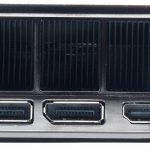
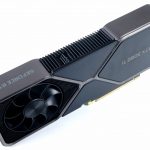
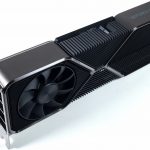
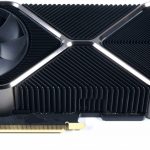
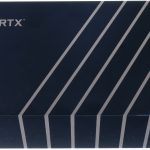
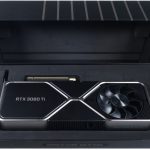
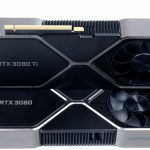
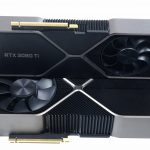
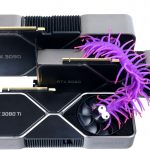
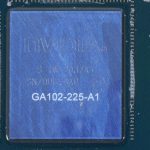


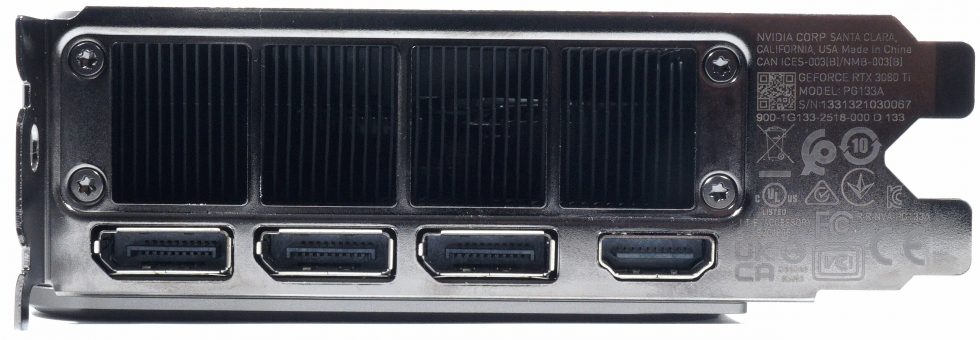
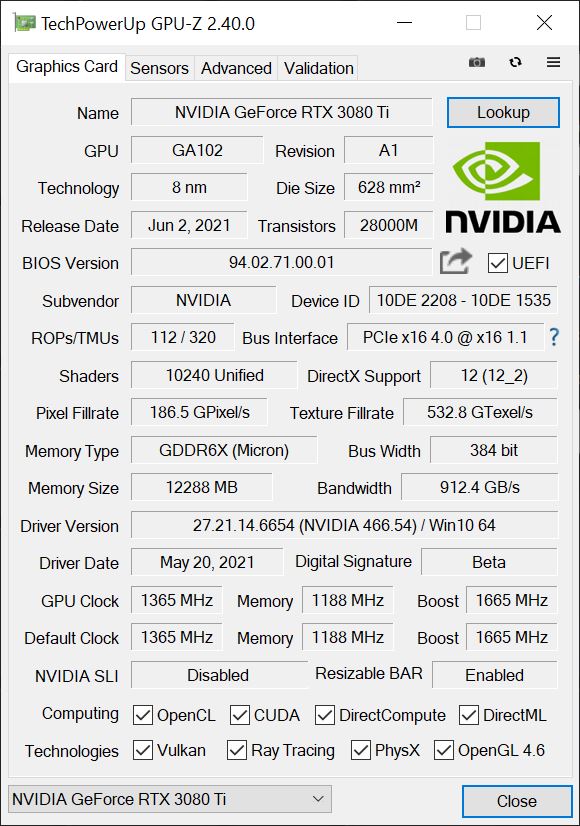
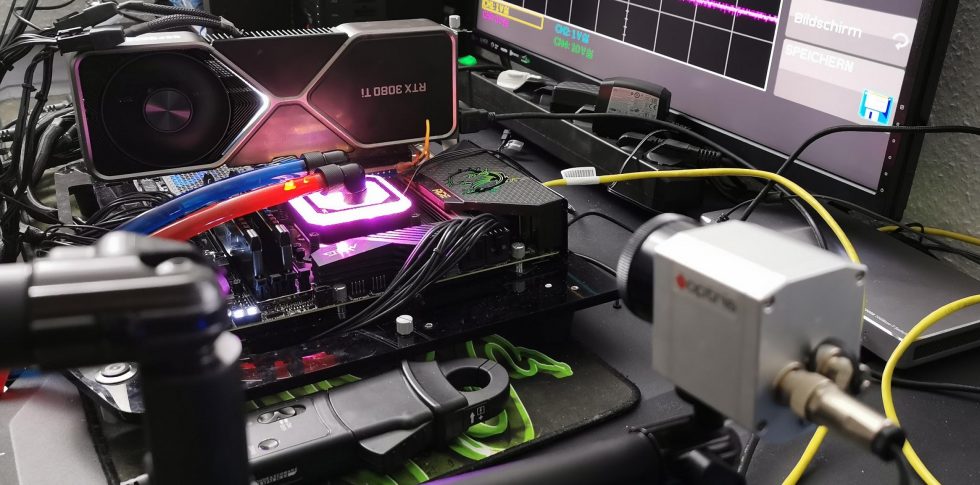
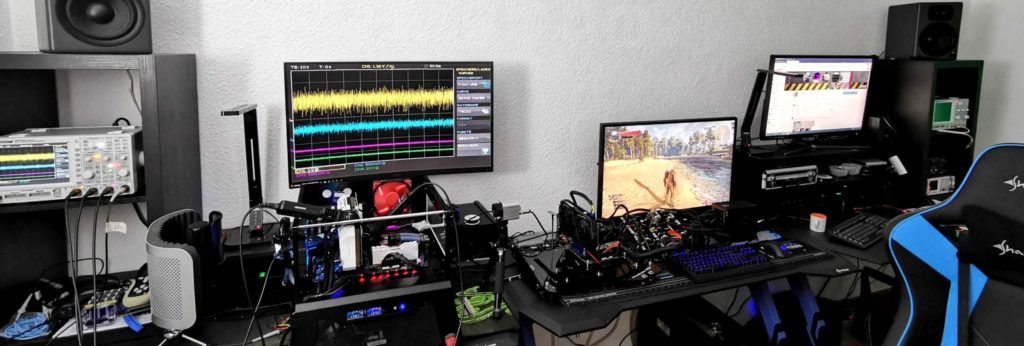
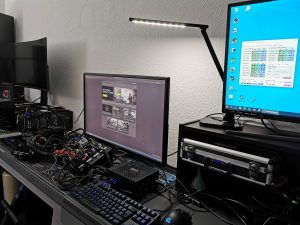
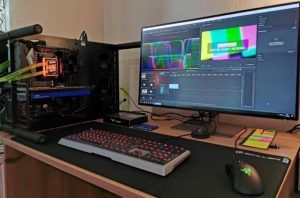
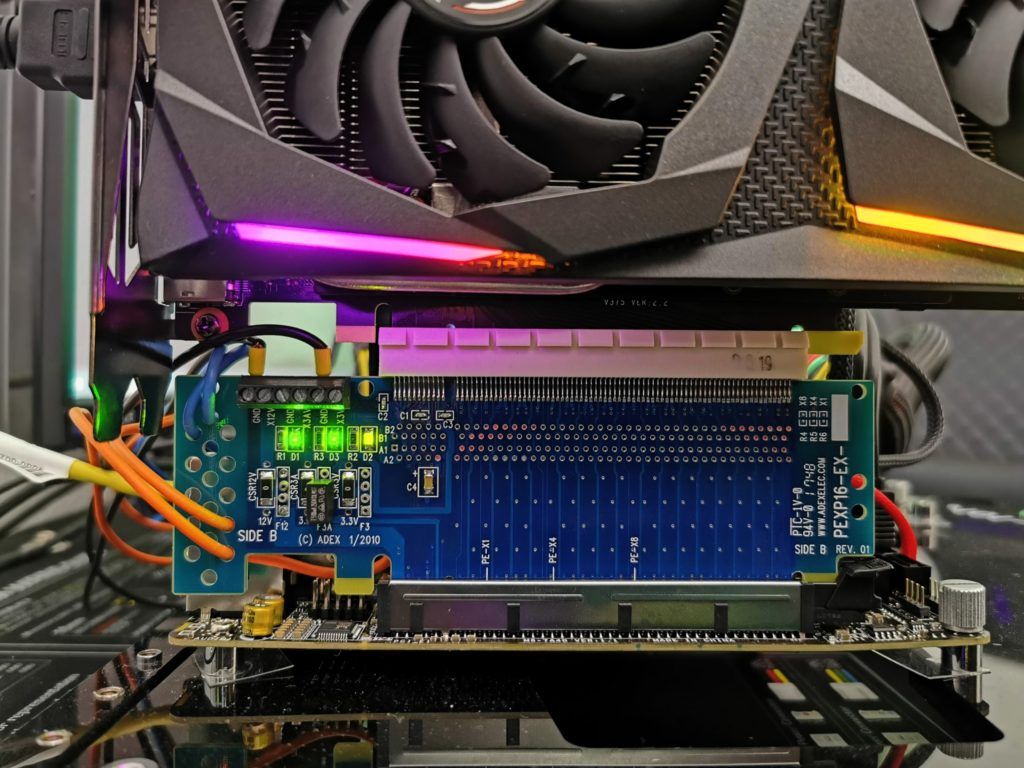




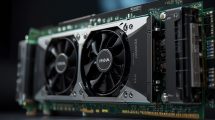













Kommentieren